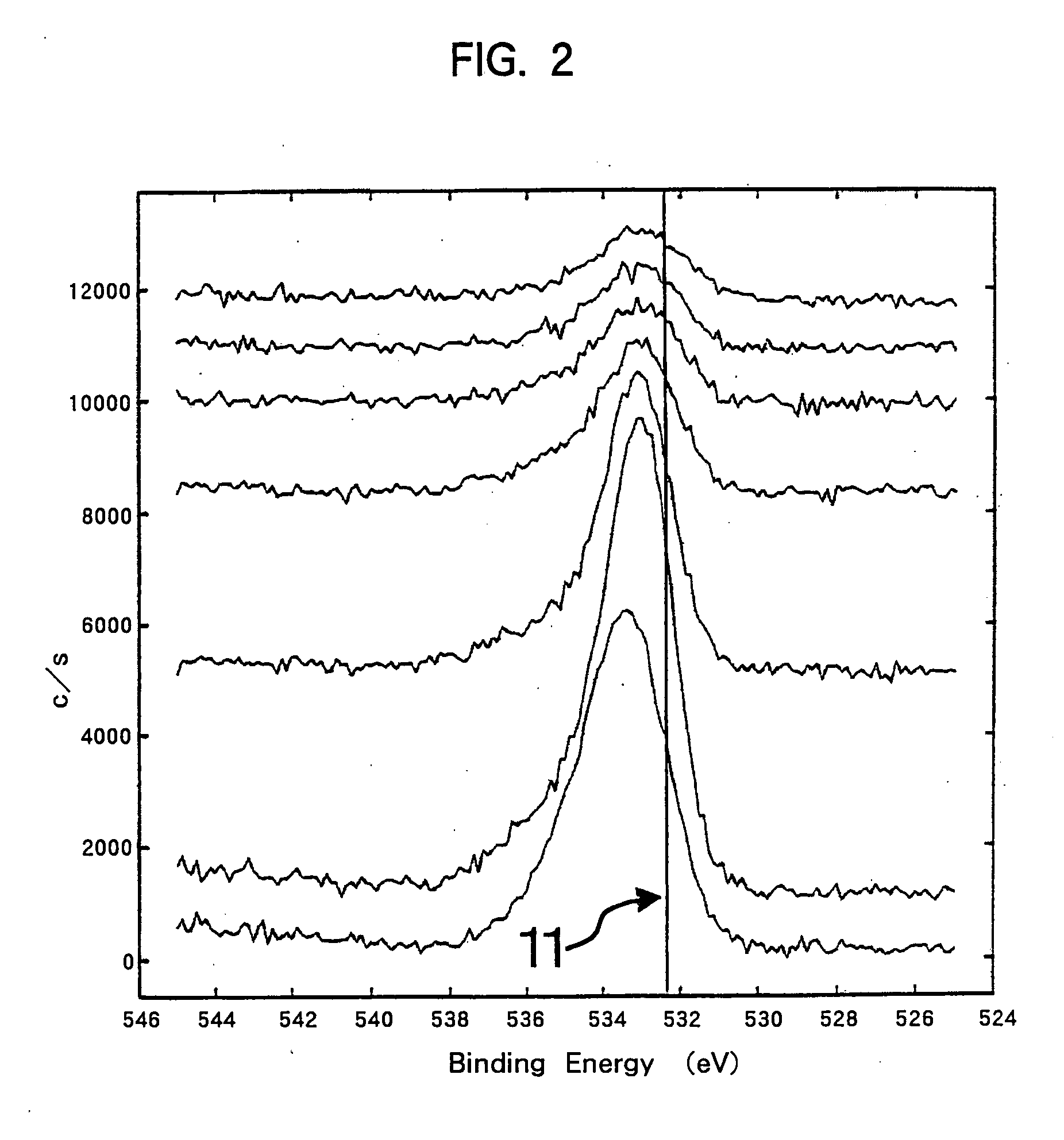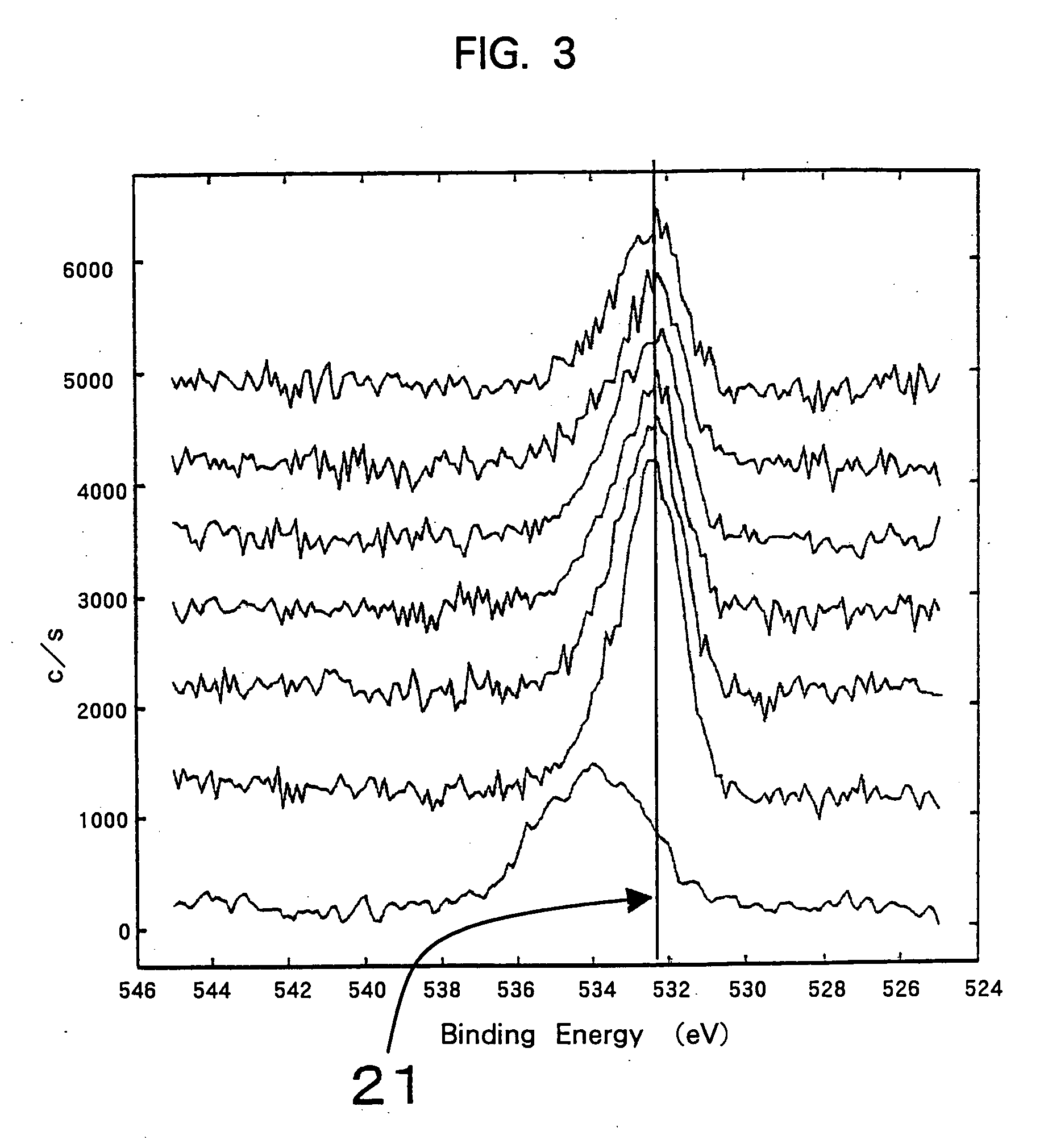Surface-treated metallic material, method of surface treating therefor and resin coated metallic material, metal can and can lid
a technology of surface treatment and metal material, which is applied in the direction of paper/cardboard containers, envelopes/bags making machinery, other chemical processes, etc., can solve the problems so as to achieve the effect of increasing the number of steps and insufficient corrosion resistan
- Summary
- Abstract
- Description
- Claims
- Application Information
AI Technical Summary
Benefits of technology
Problems solved by technology
Method used
Image
Examples
example 1
1. Preparation of the surface-treated metal plate.
[0144] As a metal plate, there was used an aluminum alloy plate JIS 5021H18 having a thickness of 0.25 mm. By using a dewaxing agent 322N8 (manufactured by Nihon Paint Co.), this aluminum alloy plate was treated according to a customary method in a bath heated at 70° C. for 10 seconds, and was pre-treated such as washed with water, immersed in a 1% sulfuric acid maintained at 40° C. for 5 seconds, washed with water, and washed with pure water. Then, in the treatment bath represented by A in Table 1 maintained at a bath temperature of 45° C., the cathodic electrolysis was intermittently conducted with stirring by using a titanium plate coated with iridium oxide as an anode which was arranged at a position maintaining a distance of 30 mm at a current density of 10 A / dm2, repeating the cycle of flowing the current for 0.4 seconds and interrupting the current for 0.6 seconds four times, followed by the after-treatment of washing with f...
example 2
[0152] The surface was treated, the resin was applied, and the lid was prepared to evaluate in the same manner as in Example 1 but by using the treatment bath represented by B in Table 1 and selecting a current density to be 3 A / dm2.
example 3
[0153] The surface was treated, the resin was applied, and the lid was prepared to evaluate in the same manner as in Example 1 but by using the treatment bath represented by B in Table 1 and selecting a current density to be 5 A / dm2.
PUM
| Property | Measurement | Unit |
|---|---|---|
| Nanoscale particle size | aaaaa | aaaaa |
| Capacitance | aaaaa | aaaaa |
| Dynamic viscosity | aaaaa | aaaaa |
Abstract
Description
Claims
Application Information
 Login to View More
Login to View More - R&D
- Intellectual Property
- Life Sciences
- Materials
- Tech Scout
- Unparalleled Data Quality
- Higher Quality Content
- 60% Fewer Hallucinations
Browse by: Latest US Patents, China's latest patents, Technical Efficacy Thesaurus, Application Domain, Technology Topic, Popular Technical Reports.
© 2025 PatSnap. All rights reserved.Legal|Privacy policy|Modern Slavery Act Transparency Statement|Sitemap|About US| Contact US: help@patsnap.com



